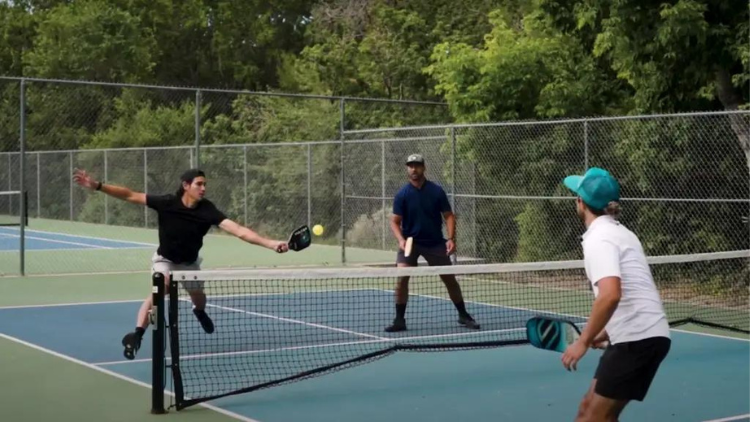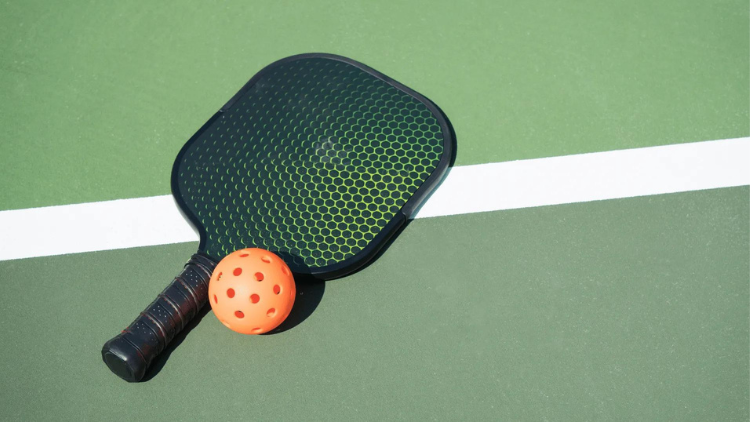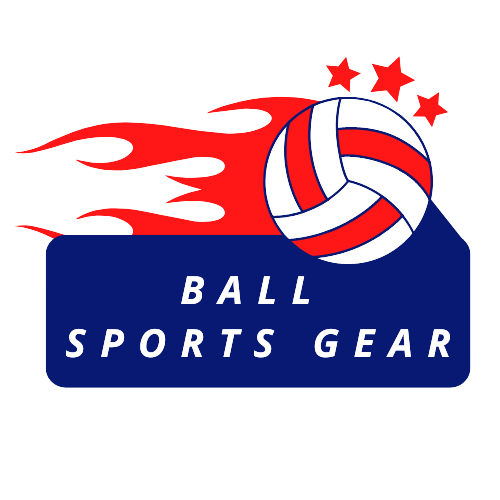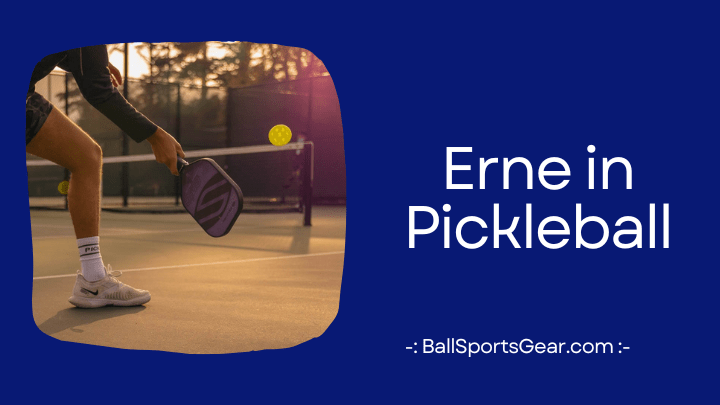Are you a pickleball enthusiast looking to expand your knowledge on the sport’s jargon? Well, look no further because we’re about to dive into one of the most important terms in the game- “Erne”! This unique shot has become increasingly popular amongst players due to its ability to catch opponents off guard. So, let’s explore what an Erne is and how it can improve your gameplay!
What is an Erne?
In pickleball, a backhand strike made with an underhanded grip is referred to as an erne. Beginners frequently employ this style of backhand, which is regarded as one of the game’s worst moves. The stroke has less force than one struck with an overhanded grip since it was struck with an underhanded grip. Also, because an overhanded grip restricts the wrists’ range of motion, the player has less control over the direction of the shot.
Because it frequently goes directly to their opponent, making it simpler for them to return, advanced players don’t typically employ it. Also, in order to make a good shot, the player must be significantly closer to the goal, making them more susceptible to drop shots and other sophisticated shots.
The Different Types of Ernes
In pickleball, there are three different ernes: the forehand, backhand, and volley. The most popular kind of erne is the forehand, which is struck while holding the racket in the right hand. Less frequently used than the forehand is the backhand, which is struck with the racket held in the left hand. The volley is typically used to return a shot that has been lobbed and is struck while the ball is still in the air. Since it is simpler to create force and precision with the dominant hand, forehand shots are the most popular.

Although though it is more challenging to control, the backhand may be helpful when a player wants to strike the ball swiftly while out of position. The volley is frequently used to return shots that are too high to strike with a conventional erne and is meant to keep the adversary on their toes. Because it is challenging to play a standard forehand or backhand in these circumstance, the volley is typically utilised in reaction to a lob or any other high shot that the opponent has made. It is a swift and potent shot that is designed to provide pressure to the opposition and coerce them into changing their approach.
How to Use an Erne in Pickleball
An Erne is an advanced shot in pickleball that involves running up to the non-volley zone line and hitting the ball out of the air from outside the court, usually on the sideline. Here are the steps to execute an Erne shot:
Get into position:
Position yourself close to the non-volley zone line on the same side as the incoming ball.Position yourself close to the non-volley zone line on the same side as the incoming ball. Being in this posture will allow you to react to the ball fast and predict where it could go, giving you the best chance to recover it. You may get to the ball more quickly and have more time to react to it by placing yourself near to the non-volley zone line. Due to your improved defensive posture and ability to read the ball better, you will be able to return the ball more successfully.
Move towards the ball:
When your opponent hits the ball to your opposite side, run towards the ball, and take a small hop as you reach the sideline to hit the ball while it’s still in the air. You’ll have more time to get ready and strike the ball with more force as a result. Also, it makes it possible for you to shift your feet rapidly and get to the ball before your opponent, which may offer you an edge on the field. By incorporating the energy from your run into your swing, this method enables you to strike the ball with additional force.
Also, it allows you the chance to reach the ball before your opponent, setting you up for a more powerful return and maybe giving you the rally’s upper hand. Running to the ball and harnessing the momentum of your run will enable you to strike the ball with more force than your opponent.
Hit the shot:
Swing your paddle low-to-high and hit the ball with topspin, directing it across the court and deep into your opponent’s side of the court. When you swing your paddle low-to-high, it will create topspin on the ball. This will cause the ball to spin forward when it hits the court, and it will give it more power and accuracy as it moves across the court. The topspin will also cause the ball to dip down quickly after it crosses the net, making it more difficult for your opponent to return it.
Additionally, the spin will cause the ball to bounce higher on their side of the court, making it more difficult for them to reach. The low-to-high swing will cause the paddle to hit the ball from below, imparting a forward spin on the ball. This spin gives the ball more power, accuracy, and a dip in its trajectory. It also causes the ball to bounce higher on the other side of the court, making it harder for your opponent to return it.
Recover:
After hitting the Erne shot, quickly return to the court’s center to prepare for your next shot.You’ll have more time to get ready and strike the ball with more force as a result. Also, it enables you to move swiftly and rapidly reach the ball before This is crucial because it keeps you in a favourable spot to receive the following shot, enabling you to predict and respond to your adversary’s next move. You may save energy by not having to run after every shot, which is another benefit.
You may better think and plan your next play by going back to the court’s centre, where you also have a better perspective of the court’s geometry. Also, it enables you to swiftly alter your weight and direction in response to your adversary’s subsequent shot. Returning to the middle of the court also enables you to use your positioning’s benefits, such as rapid responses to your opponent’s strokes and carefully considered strategy, to your advantage.

Is the Erne shot legal in official pickleball matches and tournaments?
Yes, the Erne shot is legal in official pickleball matches and tournaments, as long as it is executed within the rules of the game. According to the official rulebook of the International Federation of Pickleball (IFP), Rule 9.C.4, “the Erne shot is allowed as long as the player does not touch the non-volley zone before hitting the ball and does not step on the sideline or baseline before hitting the ball.” Additionally, the player must not impede their opponent’s ability to play the ball.
The non-volley zone, also known as the kitchen, is the area on either side of the net within 7 feet. Players are not allowed to enter the non-volley zone and hit the ball while it’s in the air unless the ball has bounced in the non-volley zone first. Therefore, when executing an Erne shot, the player must jump from outside the non-volley zone and hit the ball before landing inside the non-volley zone.
It’s worth noting that the Erne shot is considered an advanced shot and should only be attempted by experienced players who are confident in their ability to execute the shot safely and within the rules of the game. Executing the Erne shot effectively requires good footwork, timing, and precision.
When should a player use the Erne shot in pickleball?
The Erne is a pickleball shot named after one of its inventors, Ernest Adams. It is a low, soft shot that drops quickly and hits the front wall close to the service line. The Erne can be used as an offensive or defensive shot. The Erne may be used to build up a spike or finish a shot when utilised offensively. The Erne may be used defensively to keep the ball in play and compel your opponent to make a challenging shot. The Erne can also be utilised to mislead your adversary and surprise them. You may utilise it to break up their rhythm and put them in danger. It works well on both attack and defence. Players can benefit both offensively and defensively by making good use of the Erne.
Frequently Asked Questions
An Erne is an advanced shot in pickleball that involves running up to the non-volley zone line and hitting the ball out of the air from outside the court, usually on the sideline. The shot requires good footwork, timing, and precision, and can be an effective way to take control of the net.
To become an Erne in Pickleball, a player must learn to hit a forehand or backhand shot from outside the court and close to the net, while the opponent is serving. The player then quickly moves to the side of the net to hit a volley, placing the ball into the opponent’s court. Practice, skill, and agility are key to mastering the Erne shot.
In pickleball, the Erne shot has a number of advantages. It may surprise opponents, present possibilities for victors, and make opponents make challenging shots. Furthermore, it may alter the opponent’s serve’s rhythm and diversify a player’s game, making them more unpredictable and challenging to read.
Conclusions
In Pickleball, an Erne is a shot made while the opponent is serving that involves hitting a forehand or backhand stroke from outside the court and near to the net. The player then makes a rapid motion to the side of the goal to volley the ball into the other team’s area of play. The Erne shot may throw opponents off guard, open up scoring opportunities, make them take risky shots, break their rhythm, and offer variation to a player’s game.
This shot may be a useful addition to a player’s arsenal but needs practise, ability, and agility to perfect. The Erne shot is a low, powerful shot that is made near to the goal and can be used to catch opponents off guard who are anticipating a shot with a higher arc. It may be utilised to build up wins and make opponents make challenging shots since it is hard to return. Furthermore, it can spice up a player’s game and aid in upsetting the opponent’s rhythm. While perfecting this shot takes practise, skill, and agility, it may be a useful weapon in a player’s arsenal.

